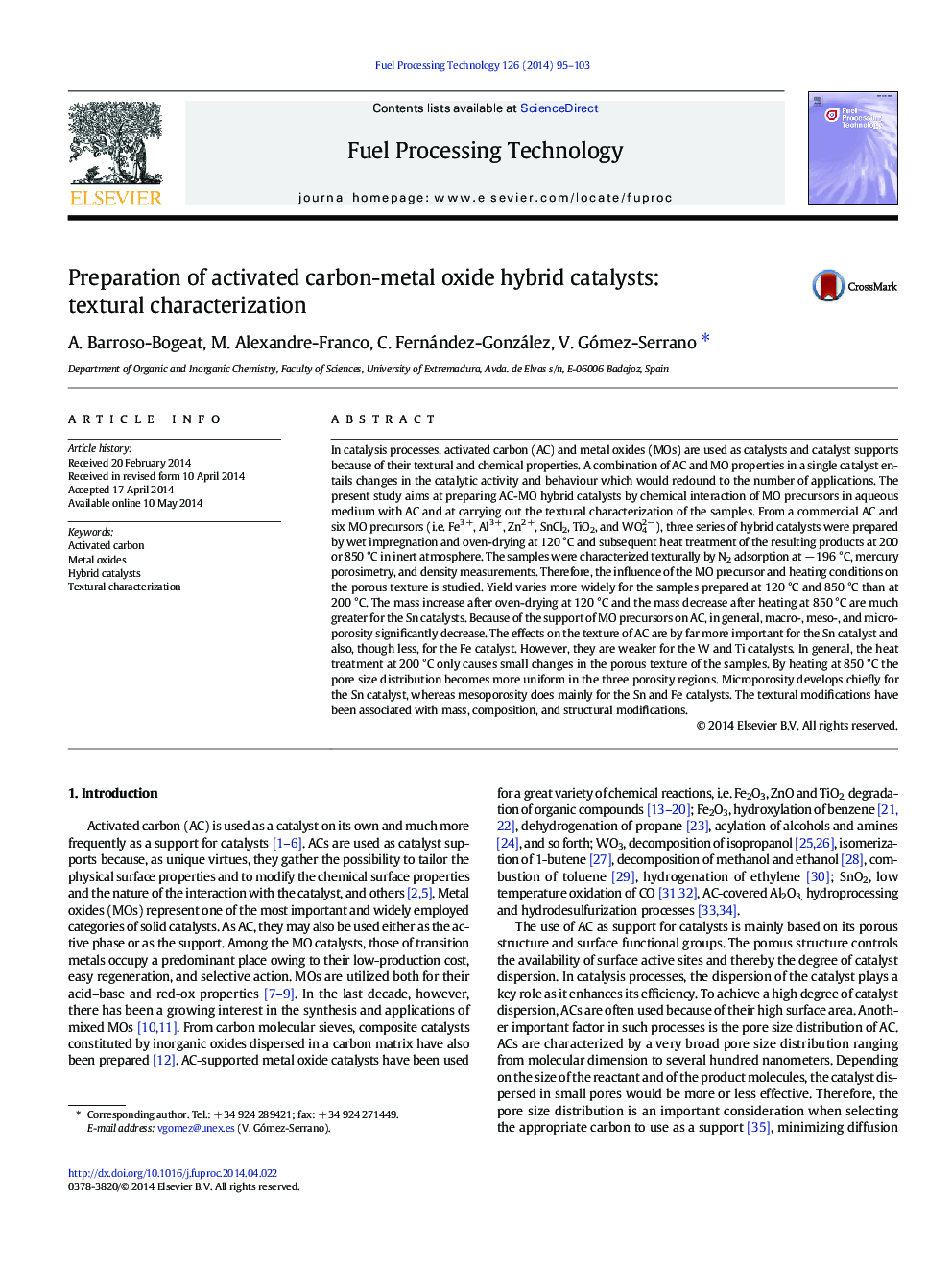| کد مقاله | کد نشریه | سال انتشار | مقاله انگلیسی | نسخه تمام متن |
|---|---|---|---|---|
| 209705 | 461681 | 2014 | 9 صفحه PDF | دانلود رایگان |
• By supporting the MO precursors on AC a significant porosity decrease occurs.
• The effects on porosity are of little significant for the 200 °C samples.
• For the 850 °C samples the pore size distribution becomes rather uniform.
• The effects on porosity are stronger for the Sn and Fe catalysts.
In catalysis processes, activated carbon (AC) and metal oxides (MOs) are used as catalysts and catalyst supports because of their textural and chemical properties. A combination of AC and MO properties in a single catalyst entails changes in the catalytic activity and behaviour which would redound to the number of applications. The present study aims at preparing AC-MO hybrid catalysts by chemical interaction of MO precursors in aqueous medium with AC and at carrying out the textural characterization of the samples. From a commercial AC and six MO precursors (i.e. Fe3 +, Al3 +, Zn2 +, SnCl2, TiO2, and WO42 −), three series of hybrid catalysts were prepared by wet impregnation and oven-drying at 120 °C and subsequent heat treatment of the resulting products at 200 or 850 °C in inert atmosphere. The samples were characterized texturally by N2 adsorption at − 196 °C, mercury porosimetry, and density measurements. Therefore, the influence of the MO precursor and heating conditions on the porous texture is studied. Yield varies more widely for the samples prepared at 120 °C and 850 °C than at 200 °C. The mass increase after oven-drying at 120 °C and the mass decrease after heating at 850 °C are much greater for the Sn catalysts. Because of the support of MO precursors on AC, in general, macro-, meso-, and microporosity significantly decrease. The effects on the texture of AC are by far more important for the Sn catalyst and also, though less, for the Fe catalyst. However, they are weaker for the W and Ti catalysts. In general, the heat treatment at 200 °C only causes small changes in the porous texture of the samples. By heating at 850 °C the pore size distribution becomes more uniform in the three porosity regions. Microporosity develops chiefly for the Sn catalyst, whereas mesoporosity does mainly for the Sn and Fe catalysts. The textural modifications have been associated with mass, composition, and structural modifications.
Journal: Fuel Processing Technology - Volume 126, October 2014, Pages 95–103
